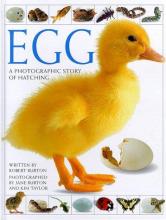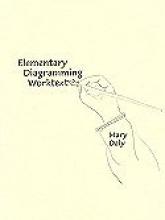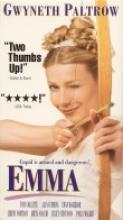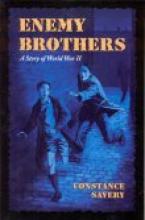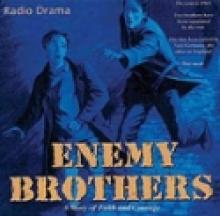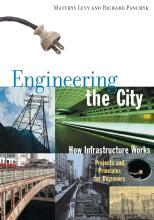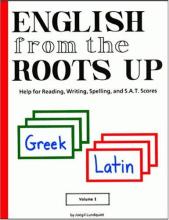No name
Eats, Shoots and Leaves
Egg: A Photographic Story of Hatching
When you think of eggs hatching, do you tend to think of birds and chicks? Think again! Reptiles, fish and insects can hatch from eggs as well. This book provides the photo stories of the hatching of 27 different animals including Ostrich, Moorhen, Japanese Quail, Starling, Leopard Tortoise, Cornsnake, Leopard Gecko, Ladybug, Common Frog, Great Crested Newt, Goldfish and Kerry Slug. Each hatching includes numerous photos with detailed descriptions of the process and how long it takes. A final photo generally shows the creature a day or two later.
The introductory pages provide comments and illustrations on "What is an Egg?", "Who Has Eggs?", and "The Developing Egg" (with drawings of the development of a baby chick within its egg).
Elementary Diagramming Worktext
This is simple, clearly presented, and in a pleasing font; examples are profuse, and exercises numerous. It includes a complete answer key, on different colored paper, in the back of the book. Ours was just a shrink-wrapped set of 3-hole-punched pages which we put into a simple binder. No fancy bindings, but an excellent presentation. The eight chapters include The Sentence: Subject and Verb, Three Articles, Adjectives, Direct Objects, Linking Verbs, Adverbs, Prepositions, and A Peek Ahead. The introductory paragraph sums up the book succinctly: "Usually, we teach diagramming very gradually and even spread it over several years because there are so many details to learn. The trouble is, diagramming is a sort of language, though only a written language, and until you can use it for everyday thinking, you can't get used to it...Perhaps grammar could be taught a lot earlier and faster if it were made simple and visual." That is what the author has done...simply and visually.
Update:The second edition (2002) contains 71 pages plus a 38 page answer key. The binding is now a "perfect bound" softcover binding. The content is essentially the same.
Copyright 1998 / 2002
Emily's Everyday Manners
Emma
PG, 121 Min, Color
Starring: Gwyneth Paltrow, Toni Collette, Alan Cumming, Ewan McGregor, Jeremy Northam
Enemy Brothers
The story is a classic tale of the conflict between good and evil, love and hate - particularly on an intellectual level (the plane in which so many of today's moral conflicts lie). Much of Max's indoctrination is of an intellectual nature and I appreciate the fact that the good side is portrayed as fighting on God's side, despite errors of judgment in the past. The story is filled with interesting details of the time period. As I read the story, I found myself stopping frequently to comment to my husband about this or that aspect of the way things were during World War II, that I had never heard of elsewhere.
The writing quality and the beautiful way the author describes certain subtleties (such as how Max slowly discovers how different life in England is from life in Germany and how much of his beliefs about the English were simply German propaganda) are just wonderful. The thoughtfulness of the scenes in portraying some of these details makes the reading very enjoyable for adults as well as children. In some cases, as a family read-aloud, these scenes may require a little explanation for the younger children. A few tidbits made me and my husband laugh out loud which prompted the children to beg for an explanation! Overall, we have found that our children really love these opportunities to stop and talk about the story a bit and these tangents can be one of the real blessings of reading books as a family.
Although the story touches upon some intense and difficult concepts, like the Reb and the Redcoats, it is presented in such a manner as to be appropriate for a wide age range and could be used as a family read-aloud. The conflicts and relationships between the main characters of the story provide a beautiful opportunity to thoughtfully consider how our actions and example can affect the moral decisions of others. Highly recommended.
This book was donated for review by Bethlehem Books
Enemy Brothers Audio Drama
Under any circumstances the transition would be traumatic, but now, with the outbreak of World War II, he is thrown into total disarray. Refusing to believe that he is English, Tony makes several attempts to escape from his new home. Then unexpectedly, he is given the chance to return "home" to his "mother" and to Germany, to be "Max" once again. Will he leave England, a country he was taught to hate in the Hitler youth, and his true family, whose values are so different? The consistent, loving patience of his siblings in the midst of his atrocious behavior is a beautiful and essential part of the story that dramatically shows Gospel-like attitudes to be the right answer.
Enemy Brothers exemplifies the eternal struggle within us. It is a story of the battle between good over evil, love versus hatred, kindness and goodness against anger and mistrust, sacrifice and the bearing of another's faults instead of revenge, and ultimately hope in the goodness of human heart. Will love triumph in the end?
In addition to the great story of conflict and suspense, this radio drama offers interesting sound effects and bits of historical recordings; all creating the feel that you are there. The well-done script smoothly interweaves narrator, music, sound effects and superb voices. This is a first rate production!
2 CDs, 90 minutes
Engineering the City
Reading Level: Ages 9-12
I must admit that this is not a topic in which I am particularly interested. I'm very secure knowing that the water will be available when I turn on a tap or that the bridge I'm driving over will hold me. I'm not sure if I want to know what happens after I flush a toilet or where the garbage goes. That being said, this book helped me to understand these mundane things using terms that are easily understandable, describing activities that encourage further learning, and showing pictures that are clean and clear and make their point.
This book would make a great secondary resource for high school level physics, engineering or civics courses in that it helps define and explain how the things we take for granted work – why there are different bridges for different applications; what the water table is and why it's important; ways and means of transporting citizens; and many other topics. The simple line-drawn diagrams and illustrations ease understanding of some of the more technical information. Published by Chicago Review Press, this book is supposedly for 9-year-olds and up. I think, unless your middle school student is very "into it", this resource would be better suited to high school students. Some of the activities are a bit blah or extremely elementary, but taking into consideration the subject matter, the activities do help illustrate the concept or principle described in the accompanying text.
Chapters include: water, transportation by water, irrigation, different ways of transportation, trains of all types, different styles of bridges, wires/telephones and wireless communication, plumbing and sewers, refuse disposal or reuse, and pollution from acid rain, global warming and water pollution. This book would make a great text for a co-op class of high schoolers, with the projects done in a group setting with a bit of competition thrown in. For instance, to illustrate the concepts from the chapter on different styles of bridges, a bridge-building contest using the designs described would be great. This book would also be suitable for ideas for science fair projects or as a high school level introduction to civil engineering.
English from the Roots Up
This is a really neat and fairly simple program designed to introduce children to 100 Greek and Latin words that are common roots of English words. Along with background information, Greek and Latin pronunciation guides, and other teaching tips are 100 pages containing one Greek or Latin Root word, a list of English derivatives (with definitions and other root words), teaching notes and extra derivative words.
For example, the fourth word taught is the Greek word metron, meaning "measure". Derivative words (i.e. English words that take their meaning from metron) listed are - meter, geometry, optometry, symmetry, barometer, thermometer, diameter, centimeter, and anemometer. Each of these derivatives lists other root words (such as geo - meaning "earth" - which is another Greek root from which the word "geometry" is derived) and literal definitions of each word follows. The teaching notes give details about some of the different meanings of the word "meter" and how other Greek roots contained in the dervatives (geo, syn, and thermos) will be covered on their own pages as well. The "extra words" segment covers the derivative "metronome", its other greek root (nomos) and the definition
Pages: 100 + appendix


